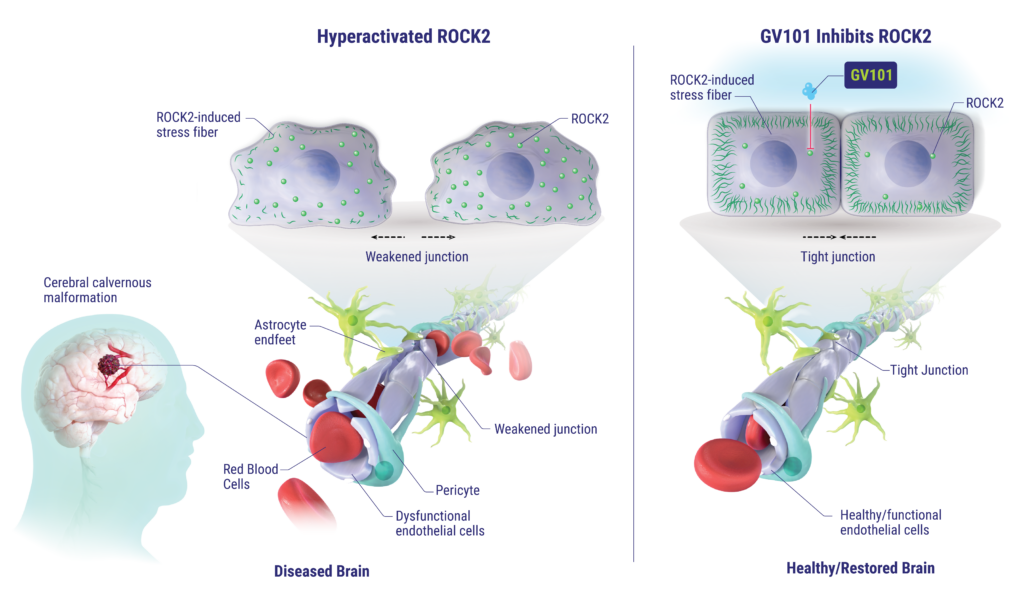OV888/GV101 capsule & ROCK2 platform
overview
Ovid entered a collaboration with Graviton Biosciences on May 1, 2023. Together, the companies intend to develop OV888/GV101 capsule and a potential portfolio of selective ROCK2 inhibitors for the treatment of a broad range of neurological conditions, including cerebral cavernous malformations.

mechanism of action
Rho-associated coiled-coil containing protein kinase 1 and 2 (ROCK1/2) are kinases with isoform differences in tissue distribution. Specifically, ROCK2 is expressed abundantly in skeletal muscles and in the brain and is believed to primarily function to regulate intracellular cytoskeletal organization. Evidence suggests that the ROCK2 signaling pathway may be hyperactivated in multiple neurological diseases, including disorders involving vascular structures and nerve myelination diseases that can result in seizures, spasms and a variety of symptoms. Despite this link, there has been limited clinical development of ROCK2 inhibitors due to challenges penetrating the blood-brain barrier (BBB) and the inherent challenge of avoiding inhibition of ROCK1, which can drive unwanted side effects.
development
The lead compound, OV888/GV101 capsule is a highly selective and potent ROCK2 inhibitor. OV888/ GV101 has completed a Phase 1 healthy volunteer study evaluating the safety, tolerability, and pharmacokinetic (PK) profile of multiple ascending doses of OV888/GV101 capsule. The Phase 1 study met its objective, demonstrating a favorable safety and tolerability profile with no serious adverse events. Secondary endpoint results indicate that the target pharmacokinetic profile was achieved at the targeted clinical dose, supporting once daily dosing.
Full topline results of the Phase 1 study can be found here.
A Phase 2 study for the treatment of cerebral cavernous malformations is expected to initiate in the second half of 2024.
potential indications
Initial clinical development is anticipated to address cerebral cavernous malformations, for which there is strong mechanistic evidence for inhibiting ROCK2. See below to learn more about cerebral cavernous malformations.
- Cerebral cavernous malformations are one of the most common intracranial vascular malformation in humans, presenting as mulberry-shaped abnormal blood vessels with thin, leaky walls located in the brain and or spinal cord.
- Cerebral cavernous malformations affect approximately 1:250 individuals (Flemming, 2017).
- At diagnosis, the majority of patients present symptomatically with hemorrhage, focal neurologic deficit and/or seizures.
Reference: 1. Flemming KD et al. Population-based prevalence of cerebral cavernous malformations in older adults: Mayo Clinic Study of Aging. JAMA neurology. 2017